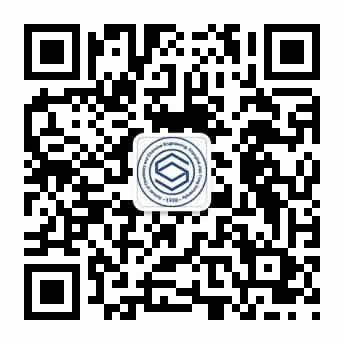TOPIC:Hydrogels as Amphibious Carriers for Nanoparticle Phase Transfe
SPEAKER:Prof.Dayang Wang ,School of Engineering, RMIT University, Melbourne, VIC 3001, Australia
TIME:January 3 (Tuesday)15:00 pm
LOCATION:Room 410, Chemistry Building B (化学B楼410会议室)
INVITER:陈接胜 教授
Abstract
This talk will present a fairly simple and versatile way to use hydrogel as a generic carrier to directly and freely transfer various nanoparticulate materials into different media and thus encapsulate them without need of chemical modification of the loading guests and the hydrogel network and any size matching or chemical affinity of the loading guests for the hydrogel host.1-3 The key of the present methodology is to use water-miscible organic solvents such as tetrahydrofuran and isopropanol intermediates to reversibly exchange the aqueous milieu initially absorbed in the hydrogel with water-immiscible organic solvents such as chloroform or hexane, thanks to the fact that the hydrogels themselves can be dispersed in a wide range of solvents of different polarity. Over the course of solvent exchange in the hydrogel, one can reversibly change the polarity of the hydrogel at will, which make the hydrogel like an amphibious submarine to direct hydrophilic materials into the organic solvent-soaked gel matrix (organogel) or lipophilic materials into the water-swollen gel matrix (hydrogel) and thus encapsulate inside the gel matrix as a result of the loading guest being completely incompatible with the surrounding medium. The proper control of the solvent exchange procedure allows little deterioration of the intrinsic properties and even surface properties of the loading guest materials. The present methodology also allows simultaneous or stepwise loading of different materials into one hydrogel in a tailor designed manner to produce multi-component composites. In this talk, inorganic nanoparticles and enzymes will be used as models to demonstrate our concept. But the present methodology should be easily extended to other materials, for instance various organic molecules and macromolecules with different water solubility.
1.C. Cheng, D. Wang, Angew. Chem. Int. Ed, 2016, 55, 6853
2.S. Bai, T. L. Nguyen, P. Mulvaney, D. Wang, Adv. Mater. 2010, 22, 3247.
3.S. Bai, C. Wu, K. Gawlitza, R. von Klitzing, M. B. Ansorge-Schumacher, D. Wang, Langmuir 2010, 26, 12980.
Biography:
汪大洋 教授是国际胶体界面科学领域知名学者,英国皇家化学会会士(FRSC)。1972年出生于辽宁沈阳。1993年于吉林大学化学系获得高分子材料本科毕业。1998年吉林大学化学系获得高分子化学与物理博士毕业, 从师于汤心颐,白玉白和李铁津教授。1999年1月 至 9 月,在香港科技大学机械工程系David C. C. Lam教授研究组做博士后研究。 1999年10 月起,开始在德国马普胶体界面所(Max Planck Institute of Colloids and Interfaces)的Helmuth Möhwald教授领导的界面部工作。1999年10月至2003年6月在Frank Caruso 教授的研究小组做博士后研究, 并于2000年11月至2002年2月间获得德国洪堡基金会(Alexander von Humboldt Research Fellowship)奖学金。2003年7月起在界面部担任研究小组组长(Group Leader)。2010年7月-2015年6月在澳大利亚南澳大学Ian Wark研究所任物理化学终身研究教授 (Continuing Research Professor Position)。 2015年7月起在皇家墨尔本理工大学任化工系终身教授 (Continuing Professor Position)。2016年获聘中组部“千人计划” 专家,于吉林大学化学学院任特聘教授。
汪大洋教授的主要研究方向包括:水、气、离子和粒子的界面行为;表面润湿和粘附;相转移;粒子分散与聚集;界面相分离; 界面催化;酶等生物材料的包埋;穿越生物界面的药物传送;环境治理和修复以及废物废能资源再利用。在截至目前已发表4个学术专著章节和128余篇高水平的研究论文,其中30%以上均发表在化学和材料科学领域顶级杂志上(影响因子> 10),其中Angew. Chem. Int. Ed. 13篇。共被引用约5400次,H指数为42。



